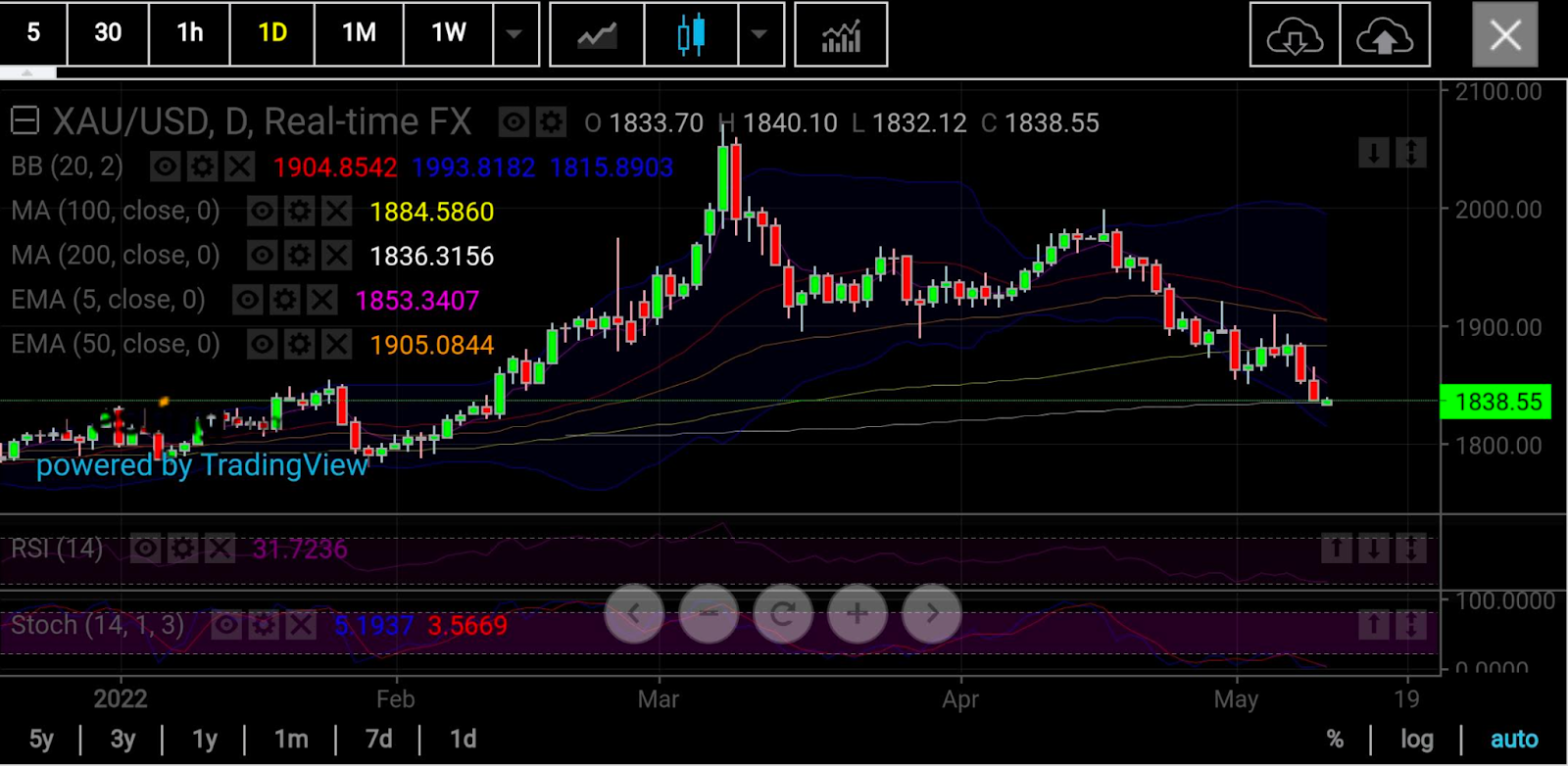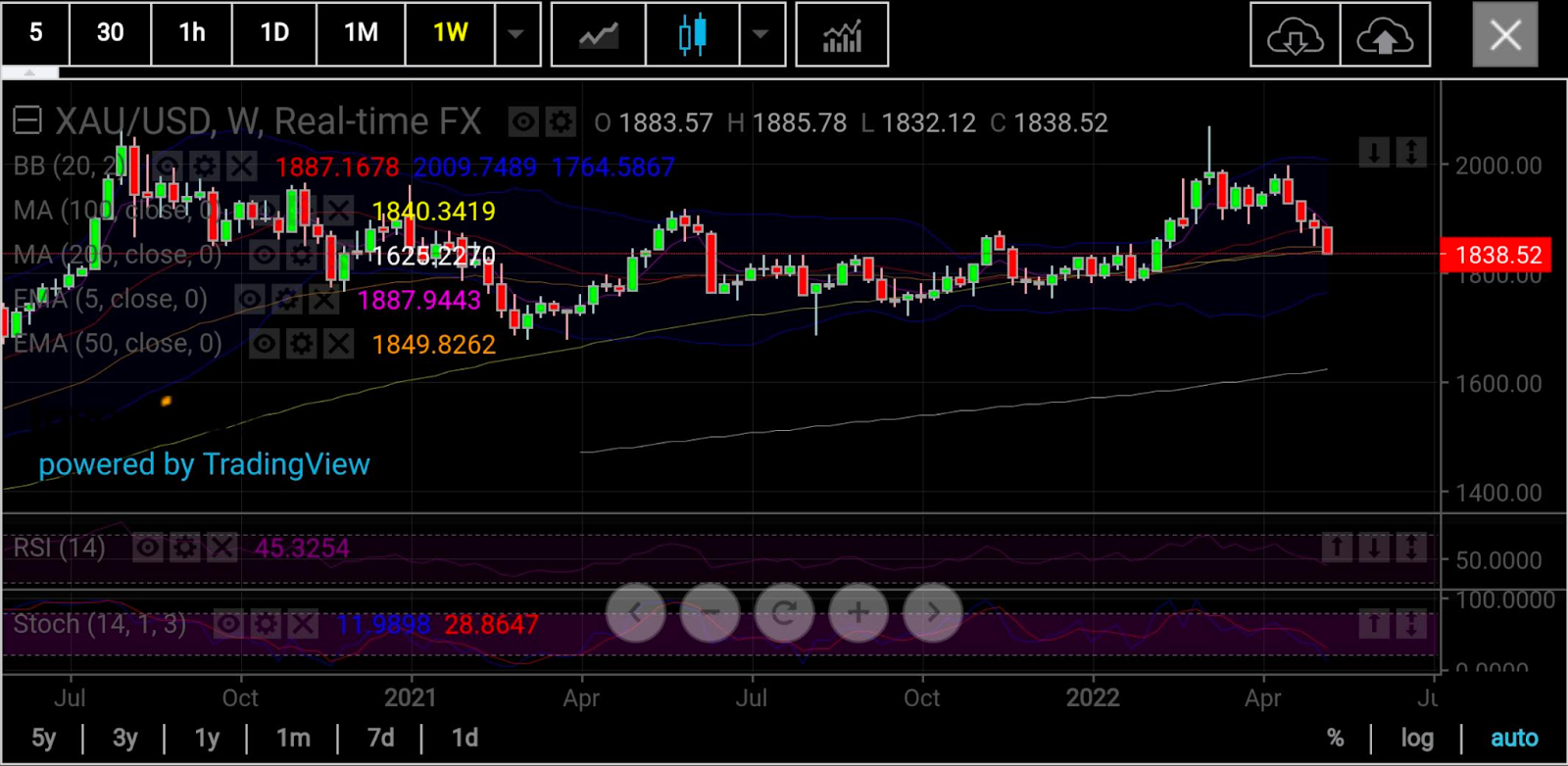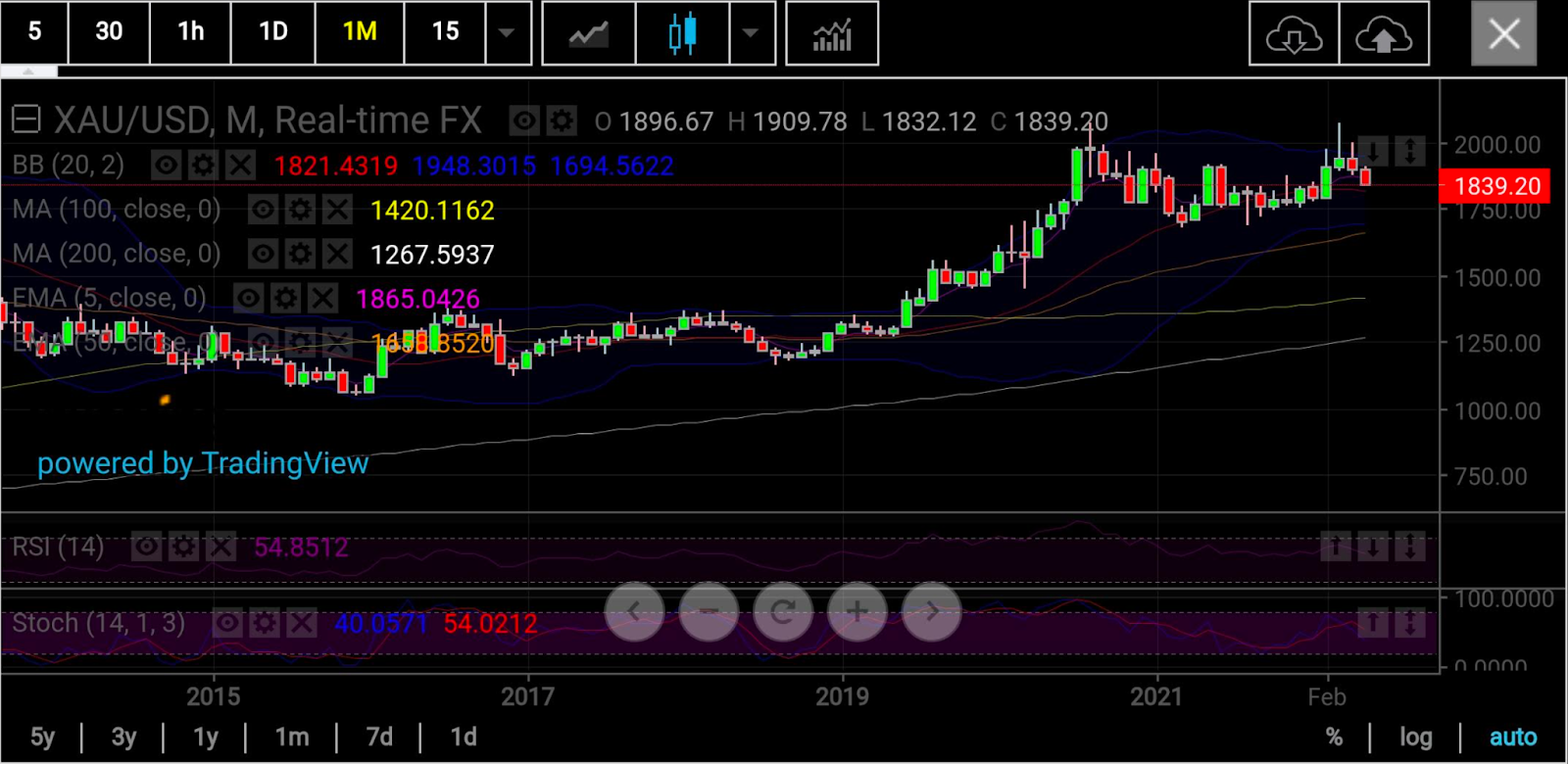Will gold fall beneath the $1,800-an-ounce support? Charts say yes, though bulls will likely be there to pull it back up quickly.
With losses running for a fourth straight week, the yellow metal was around $40 an ounce from conceding the support at the time of writing. In three earlier sessions, it had gotten closer to the potential of visiting $1,700 territory.
The dollar's 20-year highs and its withering impact on all commodities denominated in dollars has left gold tottering since its fall from the $2,000 perch on Apr. 18. Earlier, gold ran up to as high as $2,079 on Mar. 8, joining the commodity bandwagon in rallying to the Russian-Ukraine crisis.

All charts courtesy of skcharting.com
Gold should be surfing on the sails of the greatest inflation in the United States since the 1980s, if it were to live up to its billing as the best store of value and hedge against price pressures.
Yet, it’s the dollar that’s been steaming, no thanks to the most aggressive rate hikes in a generation by the Federal Reserve which have upended prices of not just gold and oil, but also pummelled those of stocks and bonds.
The Dollar Index, which pits the greenback against six major currencies, soared to a 2000 peak of 104.21 this week. It gained further impetus as officials of the Federal Open Market Committee (FOMC) debated the possibility of a 75 basis point rate hike at the central bank’s June 14-15 meeting, after endorsing 50-bps and 25-bps increases at the May and March meetings respectively.
If the Fed signs off next on a 75-bps hike, it will be the central bank’s biggest upward adjustment in rates since 1994. It will without doubt deal a greater blow to bullion bulls’ hopes to crawl back into the $1,900 territory and beyond. To be sure, money market traders have already attached an 83% probability that the Fed will agree to such a quantum of increase.
“So long as the rumble for a 75-bps hike continues, the dollar will remain king and gold will likely drift in its current anemic form, slipping from one rung to $1,800 support to the other,” said Phillip Streible, chief market strategist for Chicago broker Blue Line Capital.
He added:
“Even without going that far, the Fed has already got seven rate hikes lined up for this year and more in 2023 to get to its neutral target. That’s already choking gold as it is.”
The so-called neutral target of the Fed requires that rates get to as high as 2.0-2.5% from their current standing of 0.75-1.0%.
After contracting 3.5% in 2020 due to the coronavirus pandemic, the US economy expanded by 5.7% in 2021, growing at its quickest pace since 1982.
But inflation grew even faster. The Personal Consumption Expenditure Index, a US inflation indicator closely followed by the Fed, rose by 5.8% in the year to December and 6.6% in the 12 months to March. Both readings also indicated the fastest growth since the 1980s.
The US Consumer Price Index (CPI), another key measure of inflation, meanwhile, rose 8.5% in the year to March. Economists believe the CPI had slowed last month and its April reading, due today, could show an annual growth rate of just 8.1%—though there is every likelihood that the number could surprise to the upside.
The Fed’s own tolerance for inflation is a mere 2% per year, hence its target for a neutral rate of 2.0-2.5%.
Lower prints for the CPI “will see peak-Fed hiking priced in: Good for equities and bonds, bad for the US Dollar,” said Jeffrey Halley, who heads Asia-Pacific research for online trading platform OANDA.
“Stubbornly high prints see more Fed tightening: Bad for equities and bonds, but good for the US Dollar.”

In any case, gold was just above the triangle apex of $1,835, from where it broke out in early February to $2,060, said Halley.
“A daily close under $1835.00 would be an ominous technical development.”
“Failure of $1,835 sets up a test of support at $1,820 and then potentially $1,780. Failure of the latter suggests a deeper correction to $1,700. Gold has resistance at $1,850 and $1,882, its 100-day moving average. I foresee more whipsaw trading ranges in the days ahead.”
Michael Boutros, a gold strategist who blogs on the DailyFX platform, has a similar view, saying:
“A break lower from here keeps the focus on $1,818/28. Llosses beyond this threshold would be extremely damaging from a technical standpoint with such a scenario exposing the yearly low-week close at 1,791 and beyond.”

But Sunil Kumar Dixit, chief technical strategist at skcharting.com, thinks gold is capable of pulling toward $1,885, even if the bearish holds in the interim.
“Gold still has some room for decline to $1,820 which may act as a short term floor, initiating short term recovery to $1,850 and the 100-day Simple Moving Average of $1,885,” said Dixit, who bases his outlook on the spot price of gold.
“The daily stochastic reading of 5/3 may also cause some short-term reversal to $1,850 - $1,880.”
Even so, gold’s broader trend points lower, concedes Dixit.
“Since the mid term trend has turned bearish, any recovery to $1,850 - $1,885 will attract sellers in an attempt to push the metal down to $1,800,” he said.
“If sentiment remains vulnerable, expect a further drop to $1,760 - $1,700 over the next few weeks. That would set us up for a roller-coaster ride with dual-sided momentum in near term.”
Disclaimer: Barani Krishnan uses a range of views outside his own to bring diversity to his analysis of any market. For neutrality, he sometimes presents contrarian views and market variables. He does not hold positions in the commodities and securities he writes about.
